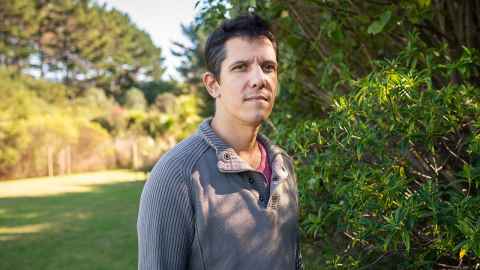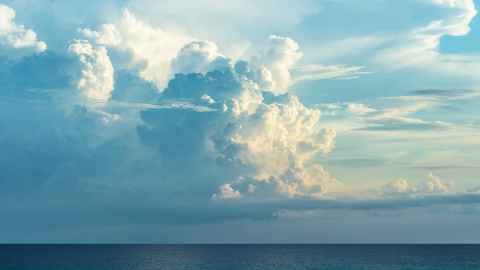Double check on climate change models with matauranga Māori
24 May 2020
Māori were skilled ocean voyagers. Their ancient knowledge of clouds could inform the accuracy of contemporary climate change models.



Do important clues into how we might respond to climate change lie in ancient Māori knowledge of cloud behaviour?
Gilles Bellon, a physics lecturer at the University of Auckland who specializes in clouds, plans to investigate lessons passed down by Maori seafarers crossing the Pacific. “It would give us a different take," says Bellon. “Theories based on the latest satellite observations, are they supported by traditional knowledge? Let’s see. It's a kind of a double check."
One of the biggest challenges for forecasters predicting global warming is accounting for the behaviour and effects of clouds, which both shield the planet from sunlight and trap radiation.
Models could be improved by accounting for so-called “memory effects,” where a cloud can bear the imprint of atmospheric conditions encountered hours or days earlier and as many as hundreds of kilometres away, according to Bellon.
The scientist is especially interested in low clouds, which have a net cooling effect on the climate that is especially pronounced in the subtropics, he says. Bellon is collaborating with Tra Dinh, a physics lecturer at the university involved in climate change modelling, and is reaching out to Māori groups with experience of lengthy sea voyages in traditional vessels. He’s received an $829,000 Marsden Fund grant for the project.

A Māori focus on clouds is reflected in not just the name of this country, Aotearoa, but also in evocative descriptions such as “te mara kumara a Ngatoriorangi,” a cloud pattern deemed reminiscent of the kumara beds of the great chief and priest Ngatoroirangi. Pūtahi is the word for long stratus clouds, Pūrehurehu for cirrus.
Bellon wants to tap the knowledge passed down by seafarers who travelled vast distances because he believes their observations of clouds may be more relevant to his theories than the more localised observations of people on land.
“What did the Maori voyagers know about how a cloud might change in shape and did they know when it would start raining or dissipate? What were their names for different types of clouds, different shapes? How did those relate to the western classifications?”
Clouds are a notoriously difficult element of climate models, contributing to variations in forecasts for the warming the planet will experience in coming years. “Because clouds interact so strongly with both sunlight and infrared light, small changes in cloudiness can have a potent effect on the climate system,” the Intergovernmental Panel on Climate Change wrote in its 2018 report. Clouds’ effects vary according to factors including their size and altitude. Low clouds do a better job of reflecting sunlight back into space than of trapping infrared light, making for the net cooling effect.
Climate models proposed recently argue that forecasts for global warming may have been too low because low clouds are likely to burn off or become thinner at the world heats up.
The low clouds that Bellon is interested in can be up to two kilometres above the earth’s surface.
They are often 100 meters or 200 meters long, which is devilishly small in the context of climate models which use grid sizes of 100,000 square kilometres.
“If this effect has a discernible impact in climate data, then it is important to represent it in climate models.”
To explain cloud “memory effects,” Bellon describes the interplay between conditions on the surface of the earth and in the “boundary layer,” the lowest part of the troposphere, where low clouds live. An increase in the earth’s surface temperature at a particular spot – say, where a big expanse of fast-warming asphalt has heated up – may increase turbulence in the boundary layer above, changing the structure of a subtropical low cloud.
A couple of days later, the effect “may still be raising the altitude of the cloud top, and making the cloud deeper,” says Bellon. “By this time, the cloud may have been carried hundreds of kilometres away by trade winds.”
To capture this effect in a climate model, a calculation of a warmer-than-usual surface temperature could be matched by predicting deeper clouds with higher tops at a distant location, based on estimated wind speeds.
“If the winds are stable in direction and speed, as in the subtropics, you should see this effect in the statistics, or climatology, of clouds,” says Bellon. “If this effect has a discernible impact in climate data, then it is important to represent it in climate models.”
Bellon says he’s building on work by the likes of a National Institute of Water and Atmospheric Research scientist, Darren King, who has recorded and compiled traditional weather and climate knowledge of iwi. The East Coast iwi Te Whanau a Apanui used plumes at Whakaari (White Island) to forecast climate conditions. A plume lying to the left indicated that rainfall was expected, while a plume that stretched intact across the horizon indicated fair weather was on the way, according to research published by NIWA.
Cloud lore
There is poetry to be found in Māori cloud terminology :
Pipipi: cirro-stratus clouds, which are high sheets of ice crystals
Okewa: nimbus, or rain clouds
Taipua: cumulus clouds bunched together in rounded masses.
Horizontal clouds are described as belts:
Red clouds at sunset – te tātua o Te Kaha (the belt of Te Kaha)
A bank of clouds in the west, lit by the setting sun – te tātua o Te Kahu (the belt of Te Kahu)
A clear band near the horizon – te Tātua o Kahu (the belt of Kahu).
Titi taranaki (radiating streaks) warned of bad weather, while cloud or mist blanketing the sky was papanui, prompting the phrase, ‘He papanui tōna tohu he āio āpōpō’ (the clouds signal that it will be calm tomorrow)
Source: Te Ara -- the Encyclopedia of New Zealand
Story by Paul Panckhurst
Research portrait by Elise Manahan
The Challenge is a continuing series from the University of Auckland about
how our researchers are helping to tackle some of the world's biggest challenges.
To republish this article please contact: gilbert.wong@auckland.ac.nz